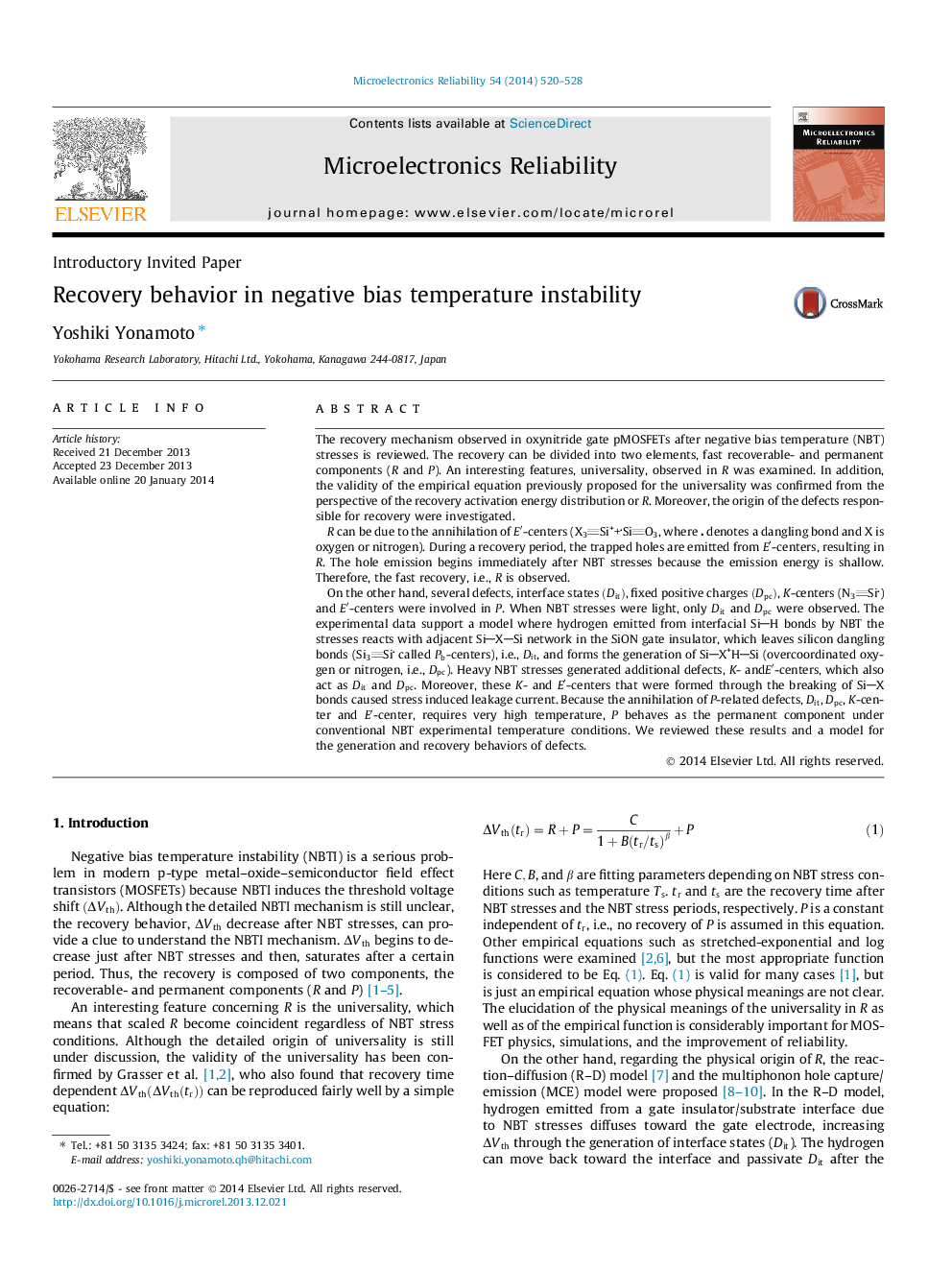| کد مقاله | کد نشریه | سال انتشار | مقاله انگلیسی | نسخه تمام متن |
|---|---|---|---|---|
| 548164 | 872171 | 2014 | 9 صفحه PDF | دانلود رایگان |
• The NBTI recovery mechanism is reviewed.
• The universality in the recoverable component is examined in detail.
• The origins of defects related to the permanent component are identified.
• A model describing the generation/recovery mechanism of defects is proposed.
The recovery mechanism observed in oxynitride gate pMOSFETs after negative bias temperature (NBT) stresses is reviewed. The recovery can be divided into two elements, fast recoverable- and permanent components (R and P). An interesting features, universality, observed in R was examined. In addition, the validity of the empirical equation previously proposed for the universality was confirmed from the perspective of the recovery activation energy distribution or R. Moreover, the origin of the defects responsible for recovery were investigated.R can be due to the annihilation of E′E′-centers (X3Si++SiO3, where denotes a dangling bond and X is oxygen or nitrogen). During a recovery period, the trapped holes are emitted from E′E′-centers, resulting in R. The hole emission begins immediately after NBT stresses because the emission energy is shallow. Therefore, the fast recovery, i.e., R is observed.On the other hand, several defects, interface states (Dit)(Dit), fixed positive charges (Dpc)(Dpc), K-centers (N3Si) and E′E′-centers were involved in P . When NBT stresses were light, only DitDit and DpcDpc were observed. The experimental data support a model where hydrogen emitted from interfacial SiH bonds by NBT the stresses reacts with adjacent SiXSi network in the SiON gate insulator, which leaves silicon dangling bonds (Si3Si called PbPb-centers), i.e., DitDit, and forms the generation of SiX+HSi (overcoordinated oxygen or nitrogen, i.e., DpcDpc). Heavy NBT stresses generated additional defects, K - andE′E′-centers, which also act as DitDit and DpcDpc. Moreover, these K - and E′E′-centers that were formed through the breaking of SiX bonds caused stress induced leakage current. Because the annihilation of P -related defects, DitDit, DpcDpc, K -center and E′E′-center, requires very high temperature, P behaves as the permanent component under conventional NBT experimental temperature conditions. We reviewed these results and a model for the generation and recovery behaviors of defects.
Journal: Microelectronics Reliability - Volume 54, Issue 3, March 2014, Pages 520–528
